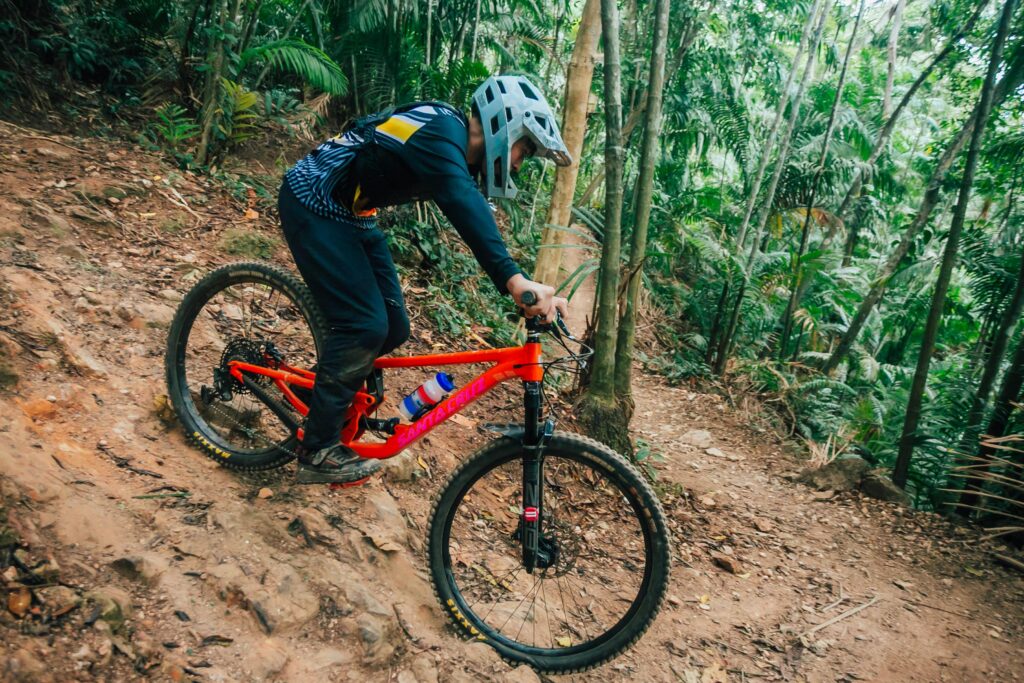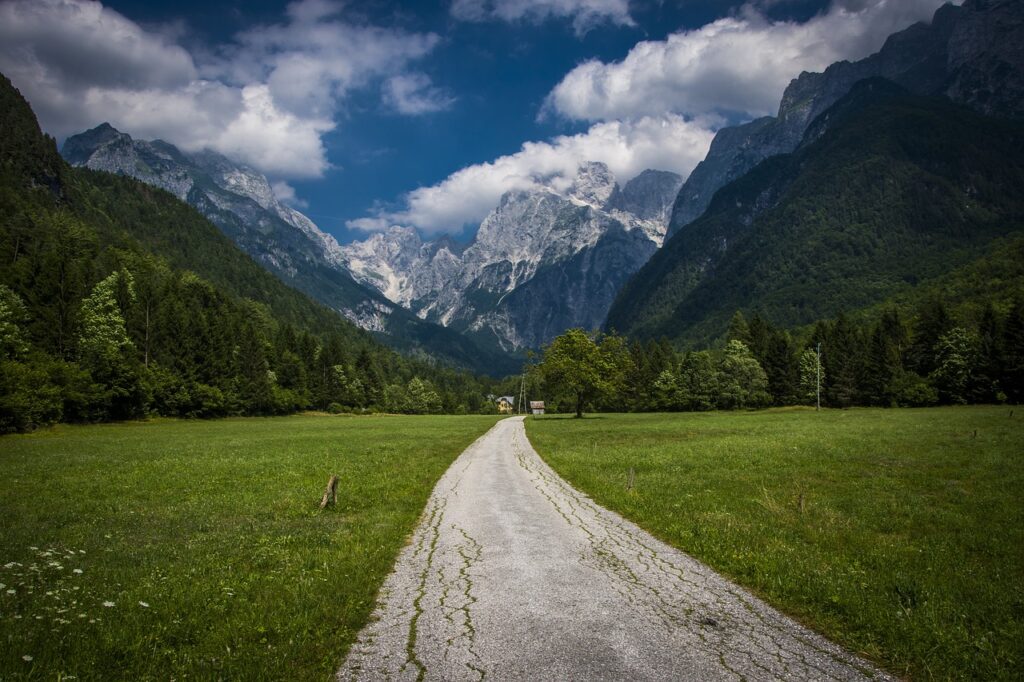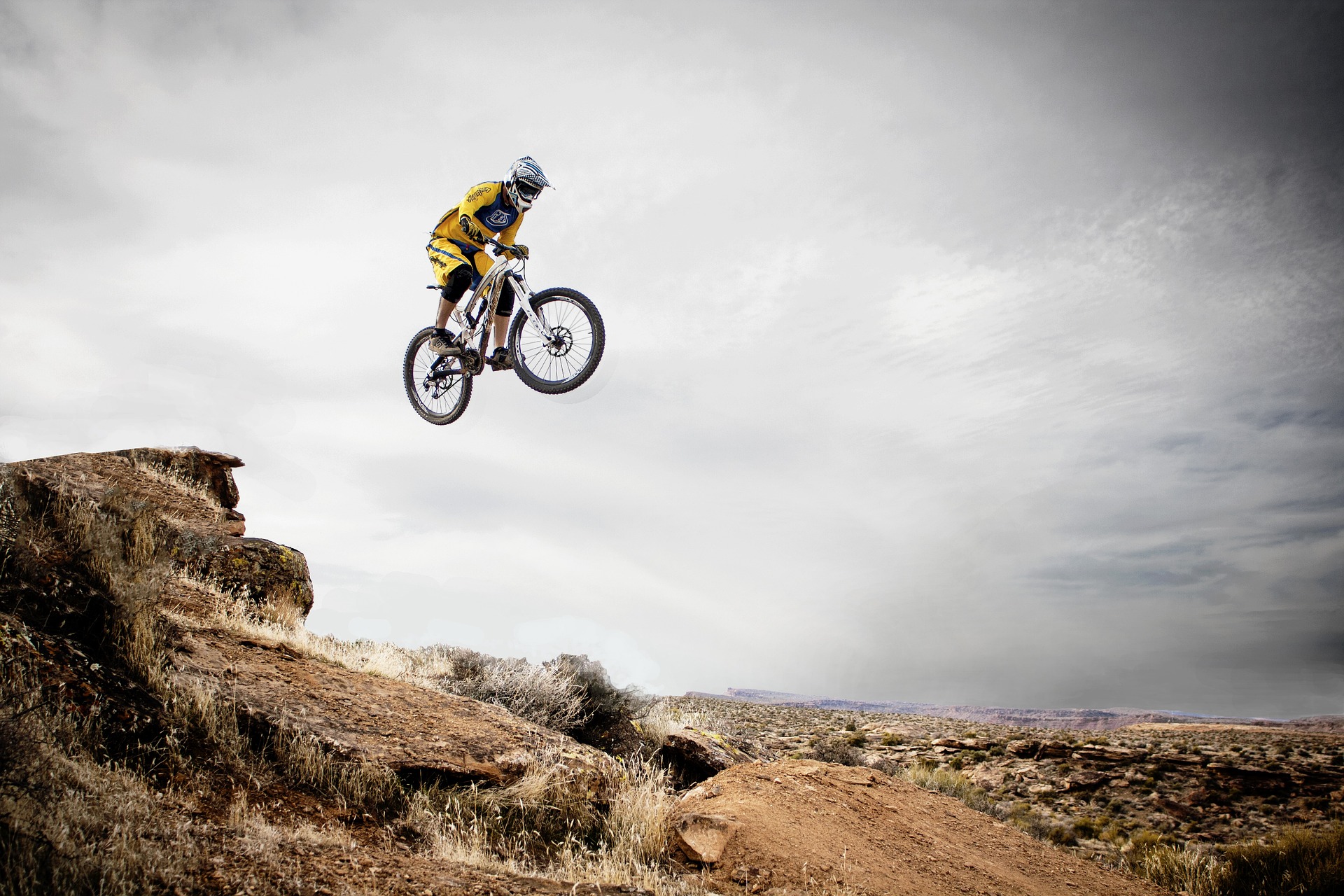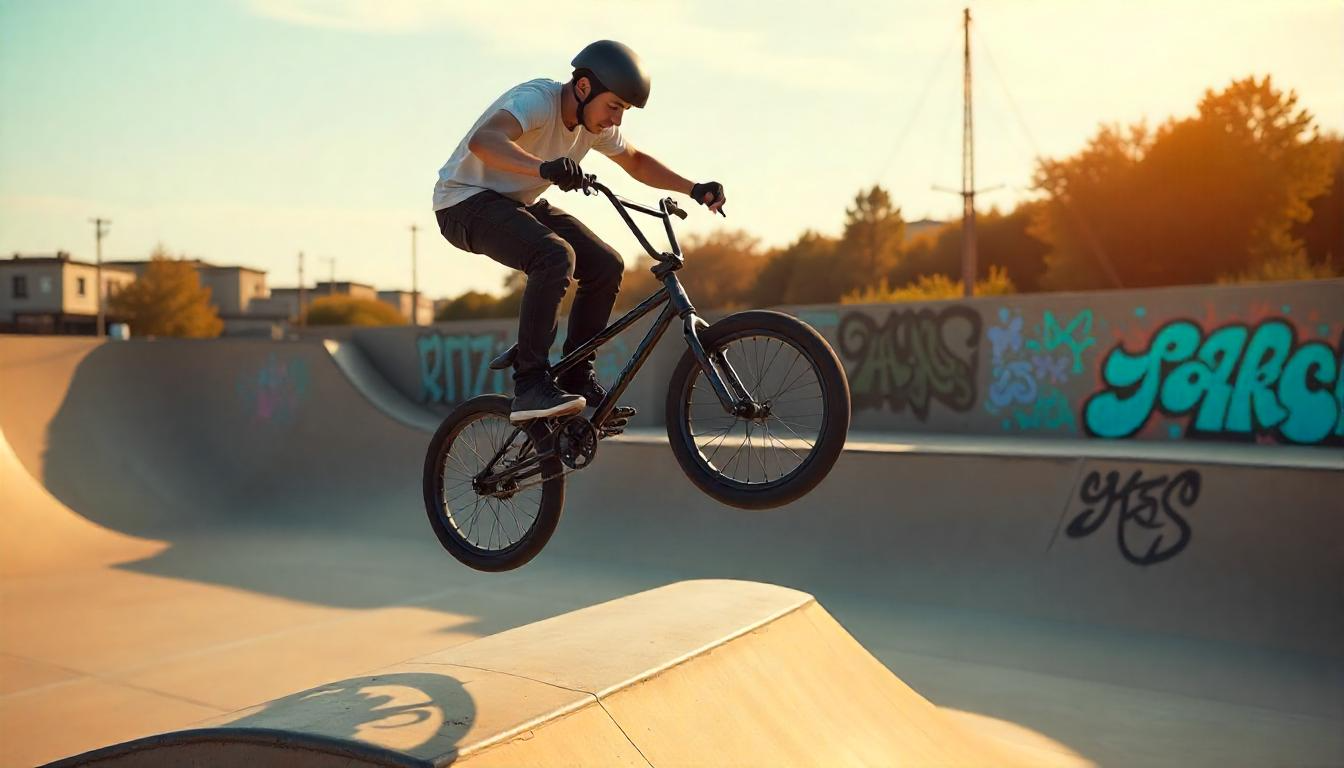Mountain biking is a sport which is a combo of adventure, thrill and fitness. If you like to face obstacles at speed along with nature in the middle of trails then mountain biking is made for you. Because beginners may find it difficult to get started as to which bike to choose and which gear is necessary. That is why this guide will take you step by step from choosing your bike to your first trail.
The Basics of Mountain Biking
When starting this sport, it is very important to understand some basics that are important for your safety and confidence. First of all, there is a difference between mountain biking and road cycling. Mountain biking takes place in off-road areas or trails, where you have to cycle through obstacles and difficult paths, so it requires some practice and technical skills to do.
Types of Mountain Biking
There are different types of mountain biking which vary according to the experience level, interest, and riding conditions of the riders. Each type has its own challenges and thrill. Let’s understand these types in a little detail.
Cross-Country (XC) Mountain Biking
Description: Cross country or XC mountain biking mostly takes place on moderate terrain or smooth trails and is beginner-friendly. In this style you have to cover slightly long distances. There are some small obstacles on the trails, but they are comparatively easy, and you mainly have to focus on speed and stamina.
Best for: Perfect for beginners and those looking to build fitness and endurance. Cross-country races are also quite popular if you want to try the competitive side.
Trail Riding
Description: Trail riding is a very popular and versatile type of riding that can be a little challenging, as you face mixed terrains. These trails involve small climbs and descents, and you need control and balance to ride.
Best for: It’s best for the riders who want challenges. Trail riding balances both adventure and thrill.
Enduro
Description: In Enduro mountain biking the rides are long with tough climbs and fast descents. Both endurance and descending are given importance. Enduro tests the rider’s stamina and technical skill.
Best for: Advanced riders or those who have gained experience and want to take their skills to the next level.
Downhill Mountain Biking
Description: Downhill or DH mountain biking takes place on downhill trails or mountain slopes where speed, control, and technical skills are very important. Steep slopes, jumps, and obstacles are quite frequent and it is known for thrills and high intensity.
Best for: It is for advanced and experienced riders as it requires a lot of attention to safety and control.
Freeride
Description: Freeride mountain biking can be on natural trails or man-made obstacles, and it can also include tricks and stunts. In this, the rider has the freedom to ride anything and anywhere.
Best for: This type is ideal for advanced riders who want to explore their creativity and skills.

Types of Mountain Bikes
Hardtail vs. Full-Suspension:
Hardtail Bikes: Hardtail bikes are a good option for beginners as they offer more speed and control on easy terrains. These have only front suspension, which makes them lightweight and affordable. Their maintenance is also relatively low and they are perfect for riding on smooth and moderate trails.
Full-Suspension Bikes: Full-suspension bikes absorb shock on trails, so they are ideal for rocky and challenging terrains. These have both front and rear suspension, which provide comfort and stability on rough and bumpy trails, these will be a bit heavy and expensive too, if you want comfort along with adventure then you can consider full suspension.
Wheel Sizes (27.5” vs. 29”): 27.5-inch Wheels: Wheels of this size make it easier for you to take tight turns and give you more control on technical trails. The smaller size of these wheels makes the bike nimble and easily maneuverable. This can be the preferable size for beginners as it provides control and agility.
29-inch Wheels: The larger size of these wheels provides speed and stability at the same time. They roll smoothly even on uneven or rocky trails and make crossing obstacles easier. They offer higher speed and better traction, making them best for long rides and downhill biking.
Budget Considerations:
Budget plays a major role in mountain biking. Entry-level bikes are good for beginner riders, which come with basic features and offer value for money. You can also explore local bike shops, online platforms, or second-hand bikes according to your budget. Buying a used bike is also a good idea to start with, until your riding preference is clear.
Essential Features:
Lightweight Frame: A durable and lightweight frame is a must for mountain biking. Aluminum or carbon frames are strong and commonly used and are easy to handle.
Sturdy Tires: Wide tires are a better choice for beginners as they help give more grip and balance. And for off road trails, thick and grippy tires provide traction and stability.
Reliable Brakes: Disc brakes are ideal as they are effective in wet and muddy conditions and help with speed control and safety.
Essential Gear for Safety and Comfort
Safety Gear:
Helmet: The first and most important step for safety in mountain biking is having a good quality helmet. When purchasing a helmet, make sure that the helmet fits you and is adjustable. Light and ventilated helmets provide you both comfort and protection.
Gloves: Gloves provide you safety and grip on rough trails.
Knee and Elbow Pads: These pads cushion your knees and elbows and can prevent scratches or bruises. This extra protection is helpful for beginner riders, particularly on downhill or rocky trails.
Comfort Gear:
Moisture-wicking shirts: To stay comfortable and cool on long rides, you should wear shirts that absorb sweat and dry quickly.
Padded Shorts: To reduce chafing and discomfort during mountain biking, you should use padded shorts that can provide you cushioning during the ride.
Durable Shoes: Choose shoes with good grip and durability that can provide support and stability on rocky and slippery trails.
Hydration: Be sure to have a water bottle or hydration pack with you while you ride, especially on trails where water supplies are not readily available.
Basic Repair Tools: Keep a basic repair toolkit in your backpack to help you with quick fixes.
Learning Basic Skills and Techniques
These fundamental and technical skills are very important for beginners as they help you develop confidence and control in mountain biking. By practicing these skills, you will be able to ride smoothly even on uneven and challenging trails.
Fundamental Skills:
Balance and Body Positioning: Body positioning helps you a lot in mountain biking as you encounter uneven terrains and need control and stability. It also helps in uneven surfaces like rocks and roots where you can’t ride without body positioning.
Braking aur Steering: It is very important to practice controlled braking in mountain biking because sudden braking increases the chances of you slipping. For your safety and balance, breaks have to be used according to the slope and conditions of the trail.
Shifting Gears: While riding on the trail you have to face different terrains, and different gear shifting is necessary for each terrain. Being in the right gear keeps both your energy and speed balanced.
Practice: When you start mountain biking as a beginner, try first in easy and controlled environments like gentle trails or parks. Here the challenges and difficulties are less, which builds your skills and confidence. When you become used to it, you can gradually try tougher trails.
Mountain Biking Trail Navigation and First Ride Tips
Choosing a Beginner-Friendly Trail: To start, choose trails that are of moderate difficulty and with smoother surfaces. Apps like Trail forks and MTB Project can help you find nearby trails, check reviews, and select ones based on difficulty level.

Trail Etiquette: Trails have to be shared with other users. Give preference to uphill riders and yield to hikers and horse riders. Do not leave any trash or damage on the trails by following the Leave No Trace rule.
Preparing for the Ride: Be sure to do a little warm-up and a basic check of the bike (tire pressure, brakes, gears). Carry essentials with you that you might forget, like a map or phone, water, snacks, and a mini repair kit for emergencies.
Safety Tips for New Mountain Biking Riders
Know Your Limits: For beginners it is important to first stick to the basic skills like balance, braking and gear shifting. One should start with easy trails and not go to difficult trails overconfidence. By staying within these limits you make progress and also reduce the chances of injury.
Stay Aware of Surroundings: It’s important to always be alert and anticipate upcoming obstacles or terrain changes. Look on the trail and be prepared for uneven surfaces or sudden turns so you can navigate smoothly.
Ride with a Friend or Inform Others: For extra safety, ride with a friend so that he can get help in an emergency. If you are going solo, tell someone your trail plan, start time, and estimated return so that help reaches you quickly when needed.
Building Confidence and Improving Skills
Join Local Groups or Classes: You can use community groups, biking classes, or online instructional videos to improve your skills. Such groups are beginner-friendly and also offer guidance from experienced riders, which can boost your confidence.
Set Small Goals: Keep your riding goals manageable and achievable, like mastering a specific trail section or gradually increasing your ride time. Each small success increases both your motivation and confidence.
Consistency is Key: Both skill and confidence improve with regular practice. You will feel more comfortable and skillful with every ride, so it is important to practice consistently.
Conclusion
Your journey through mountain biking will not be limited to adventures but will also build your self-improvement and confidence. Mountain biking will not only give you thrills but will also test your physical and mental boundaries. It can be a little tough in the beginning but you will feel progress as you ride.
With regular practice and consistency in mountain biking, your skills will improve and you will feel confident. Exploring new trails and upgrading gear can be a good next step and level up. So start your journey in mountain biking, set goals and enjoy.




